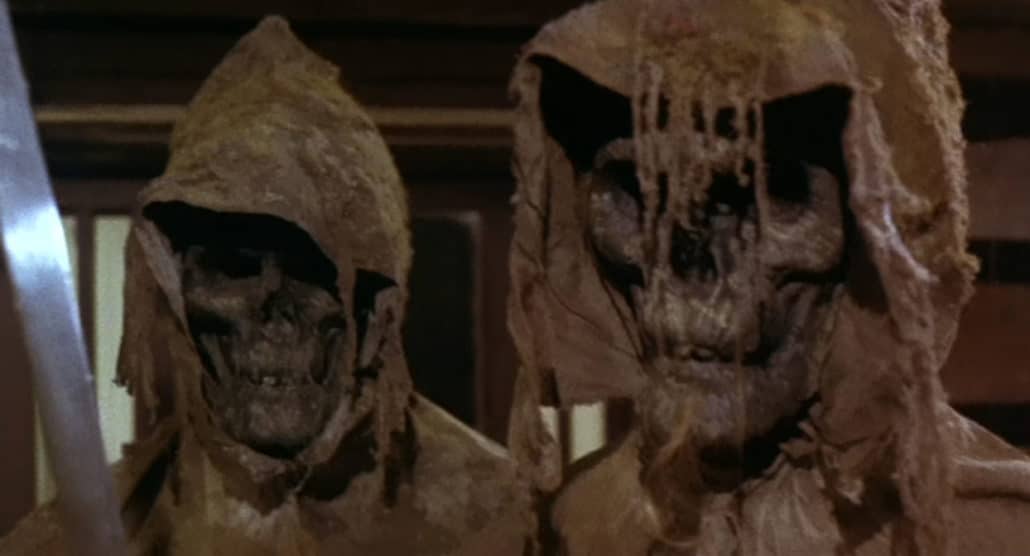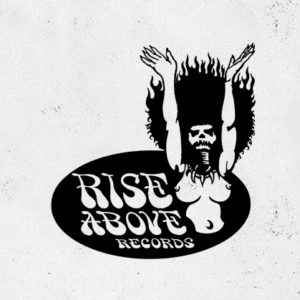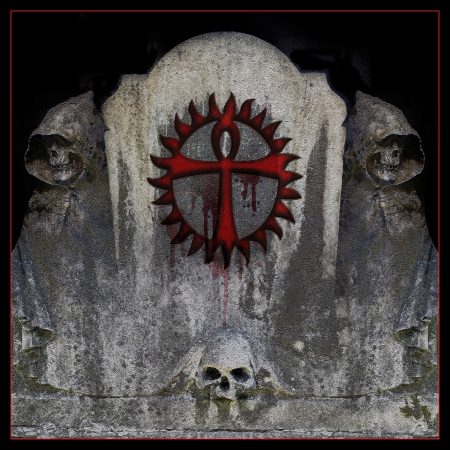Zoltan

London based Zoltan capture the eerie spine-chiiling terror of the decomposed ghoulish Knights Templar with this four track EP, by paying homage to the Tombs of the Blind Dead series of movies created by Spanish director Amando D’Ossorio.. Each track relates to one of the four movies from this cult underground series, which are regarded by many as absolute highlights of the Euro Horror underground horror scene of the early 70’s. Slow motion doomed imagery comes to life in full analogue glory, making this a must for any dark minded music lovers and soundtrack collectors out there.
Fog plumes across the ruins of a desolate medieval town… A skeletal hand claws forth from under a stone crypt… A horde of hideous cloaked corpses rise from their tombs… These are some of the quintessential images that elevate Amando de Ossorio’s grisly zombie film quartet of Tombs of the Blind Dead, Return of the Evil Dead, The Ghost Galleon and Night of The Seagulls to the upper-echelons of the Euro-horror canon.
De Ossorio’s series, initiated with 1971’s Tombs of the Blind Dead, was the product of Spain’s horror boom of the 60s and 70s; an era when filmgoers starved of even the mildest titillation by the repressive Franco regime, flocked to see risqué chillers offering hither-to unseen levels of sex and violence. Buteven during these heady times, Tombs of the Blind Dead stood out as an unique offering; whereas compatriot directors such as Paul Naschy and León Klimovsky rebooted the vampires and werewolves of Universal horror with their films, de Ossorio, a director from the folk-tale rich Northern region of Galicia, took inspiration from local medieval history and Romero’s Night of the Living Dead.
De Ossorio’s Blind Dead are resurrected 13thcentury Templar knights; a sect of death-dealing warrior-monks who returned from the Crusades as murderous Satan-worshippers, satisfying their bloodlust in horrific cannibalistic rituals. These wicked knights were brutally put to death for their evil transgressions, and blinded as part of their execution. Now, in the film’s modern day, the Templars rise from their tombs as ghastly mummified corpses (expertly dressed by de Ossorio himself), coursing through the night on zombie-horseback. Guided by sound alone, they hunt down hapless holiday-makers who stumble across their lair, Berzano, a fictional village in the remote Portuguese countryside.
Tombs was an international hit, reportedly grossing 27 million pesetas upon release. Despite perfunctory characterisation and acting, de Ossorio’s film benefits from expertly crafted set-pieces and a doom-laden atmosphere in which striking visuals, delay-infused sound effects and off-kilter musical accompaniment combine to create an impressive aura of morbidity and dread. Tombs offered contemporary audiences a raft of sensational thrills: a flashback to a sacrifice (showing the Templars in their medieval heyday), a steamy lesbian sequence and an uncomfortable, protracted rape sequence. The film is surprisingly grisly, especially in the tense finale which sees the Templars attack a train, traipsing from carriage to carriage, slaying each and every passenger.
De Ossorio was quick to capitalise on this success and in 1973 directed a sequel, Return of the Evil Dead, which, after a prologue set in 13th century Berzano, gorily depicting the Templars having their eyes burnt-out, jumps to the town’s 500th centenary festival celebrations, which sees the villagers burn effigies of their old medieval foes. Soon the Templars arise from their slumber and raid the village, slaughtering everyone in their path…
Although cheekily repurposing resurrection footage fromTombs and slightly lacking that film’s brooding atmosphere, Return’s moredirect, action-horror style offers a faster pace, more gore and better performances than its forebear. The Blind Dead are far more numerous in this film, enjoying more screen time and looking just as imposing, especially in the accomplished village massacre sequence and the film’s climactic church siege.
Unfortunately, de Ossorio faltered with the third entry, 1974’s The Ghost Galleon, inwhich swim-suited models come adrift in misty coastal waters and board a mysterious old ship, carrying a host of the Blind Dead in its hold. An impoverished production with ludicrous toys-in-the-bathtub miniature effects, The Ghost Galleon lacks the style and craftsmanship of the previous two entries. Also, the maritime setting proves constraining for the Templar zombies, denying the opportunity for slow-motion zombie-equestrianism. Thankfully, an impressive finale which sees the knights emerging from the surf, water spewing from their eye-sockets, goes someway to salvaging the film.
1975’s Night of the Seagulls, the final entry in the series, is a marked improvement. In this film, a doctor and his wife relocate to an isolated fishing village where they uncover a dreadful custom: every seven years, the villagers offer seven local virgins to the Knights Templar zombies, for sacrifice. Night benefits from a hazy, dreamlike atmosphere and its primitive coastal setting (which is rendered in the series’ most attractive cinematography) lends the film a profound sense of remoteness. Highlights include the shrieking seagulls of the title, the shocking opening sacrifice (which sees a village maiden slain on the altar and then grimly fed to crabs), and compelling slow-motion shots of the Knights on horseback bounding across the shoreline.
This superior final offering would mark an end to the Templars’ four-film reign of terror. But today the knights stand proud in film history as a towering zombie presence, which gifted European horror some of its most evocative moments and striking images.
James Blackford

